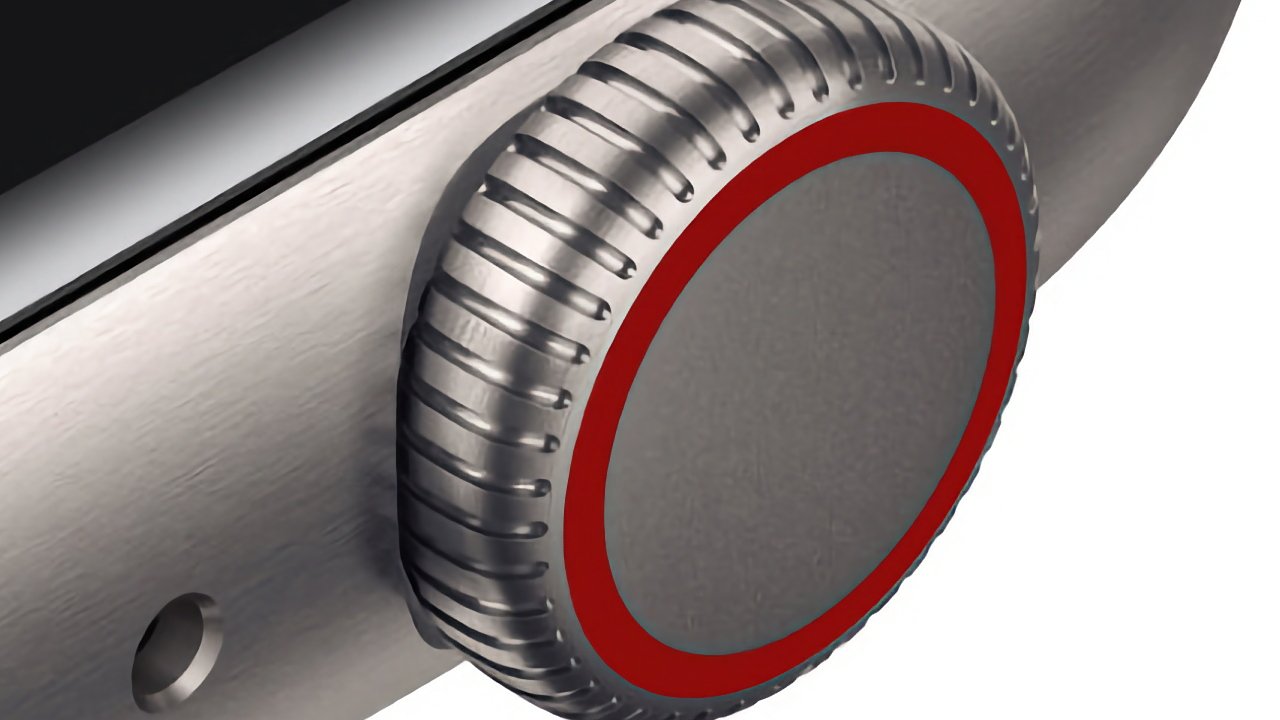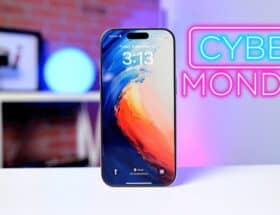Digital crowns of the future may be equipped with touch or light-sensitive sensors
 1 Facebook x.com Reddit
1 Facebook x.com Reddit
Apple continues to work to maximize benefits and capabilities of the Apple Watch Digital Crown, and conduct research on how physical rotation can be complemented or replaced by sensors that detect light or touch.
After recently filing a patent to completely replace the Digital Crown with a touch surface, Apple is also exploring an alternative option. A future Apple Watch could retain the physical crown, but add a light-sensitive surface around and around it.
“[A crown] protruding from the side of the case… [will] also form an image surface,” Apple says in the “Digital Watch Crown,” a recently issued patent.
“The crown may include a light-directing function configured to direct an object in contact with the image surface to the image-sensitive image element,” he continues.
Future digital crowns may not be as free to spin as the current one, but instead will be “spin limited” so that they can only spin one revolution.
“For example, users may interact with the crown by rotating it or, in the case of a crown that is limited to rotation, by sliding a finger across the surface of the crown,” the patent continues. “To sense the movement of the user's finger, the crown, as described herein, may include a window on the portion of the crown that the user touches when interacting with the crown.”
The goal is to allow the crown to act as if it were spinning freely, and to do this by registering the movement and speed of the user's finger. This can be done by detecting skin, taking an image of the user's finger, or detecting changes in light.
If the watch takes pictures using the Digital Crown, the patent states that the difference between multiple frames is analyzed. This is not, for example, a situation like Touch ID, where the user's biometrics are used to determine whether rotation is allowed or not.
“To detect motion from an image (e.g., a stored image), the image sensor may analyze multiple frames to determine, for example, the speed and direction of one or more image elements,” the patent states. “The characteristics analyzed may include features of the user's skin (eg, fingerprints, hair follicles) or any other optically detectable features, texture, surface irregularities, image, etc. any object. Thus, the device may respond to skin (such as the user's finger or hand), a stylus, a gloved finger…”
The patent also details how the Digital Crown could have a sensor that detects light and transmits the data to the rest of the Watch.
“The crown may include a light conductive element defining an inclined surface configured to direct light from the imaging surface to the image sensing element,” it says. “The inclined surface may have an angle configured to provide total internal reflection of light. The wearable electronic device may further include reflective material applied to the inclined surface.”
Placing your finger on the edge of the physical digital crown and rotating it can change the level of light detected by the watch. This will depend on the ambient lighting conditions — unless the Watches themselves emitted light.
“The light transmitting element may, at least in part, form the head and shaft of the crown,” the patent states. “The wearable electronic device may further include a light source at least partially within the housing and configured to illuminate the object.”
Patented detailed drawings of the methods by which light information from the Crown can be transmitted to the Watch itself.
Details of one method by which detected light can be transmitted back to the Apple Watch case
Much of the description in this patent application details that It may be assumed that this is the same as for the existing Digital Crown in the existing Apple Watch. It shows how the rotation of the crown can be transmitted along the shaft and this movement of the equipment can be converted into instructions for the display to respond.
It is possible that Digital Crown using the methods of this application may be more accurate than the current system. Such techniques can make the physical crown less susceptible to wear and tear that it would otherwise receive from a mechanical system.
Alternatively, this method may allow the digital crown shaft to be made shorter than it is now. This would give Apple more space in the Watch for other components.
After applying for this patent, Apple released another device with a digital crown. While this patent is specific to watches, the benefits of precision and smaller space will benefit the Apple Vision Pro equally.
The application belongs to Apple inventor, Michael J. Beich. He doesn't have any specific patents, but his LinkedIn profile states that he works as a hardware engineer at Apple Touch and Sensing Incubation in Germany.









